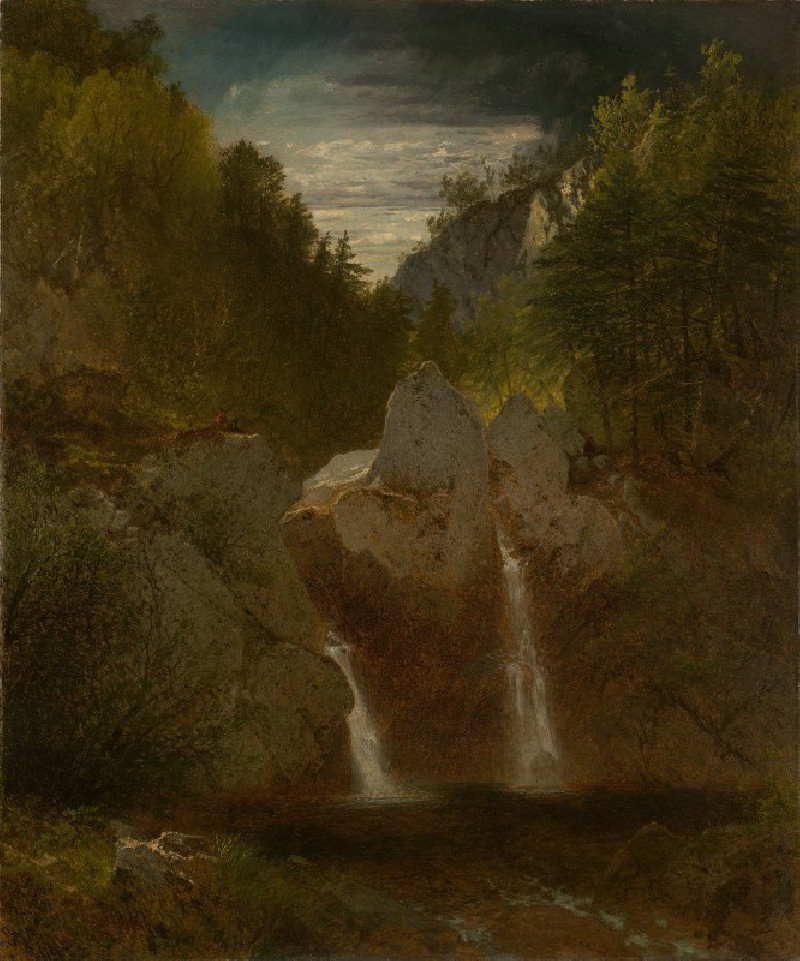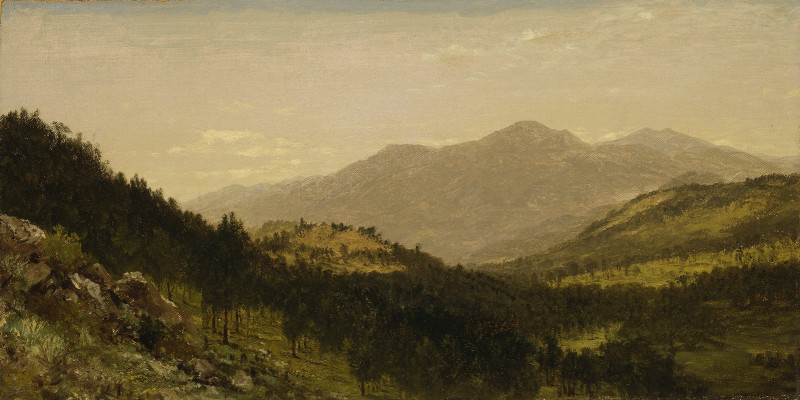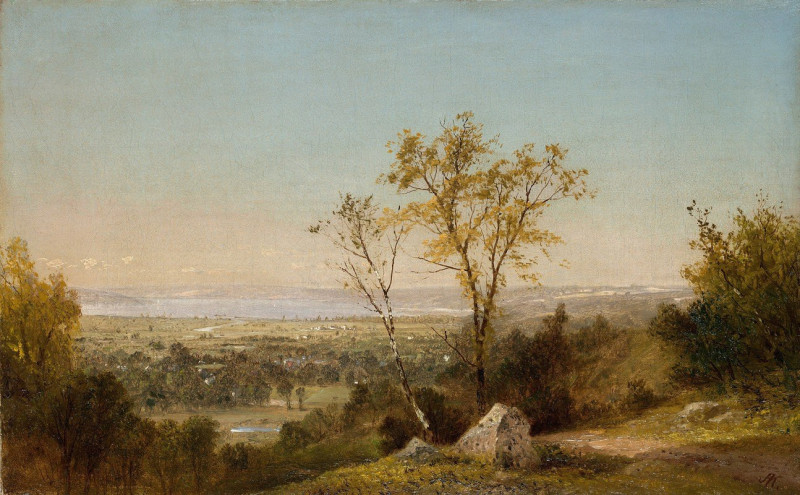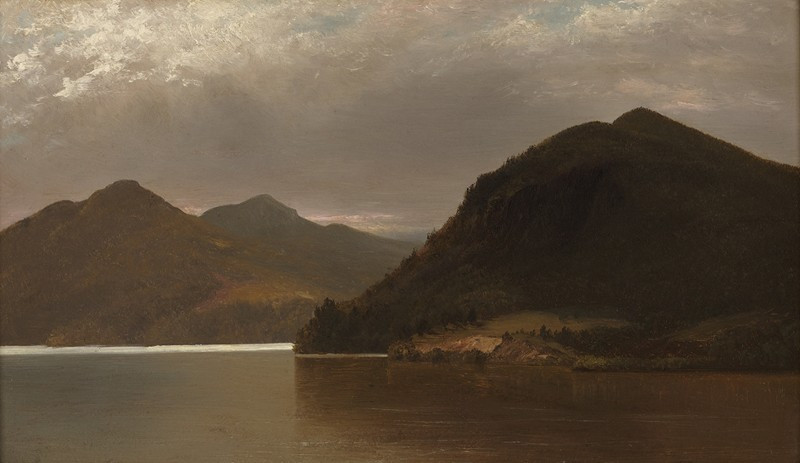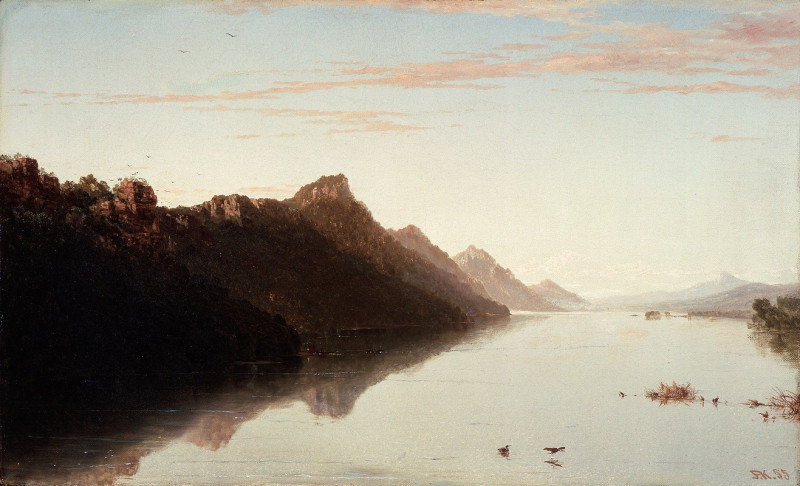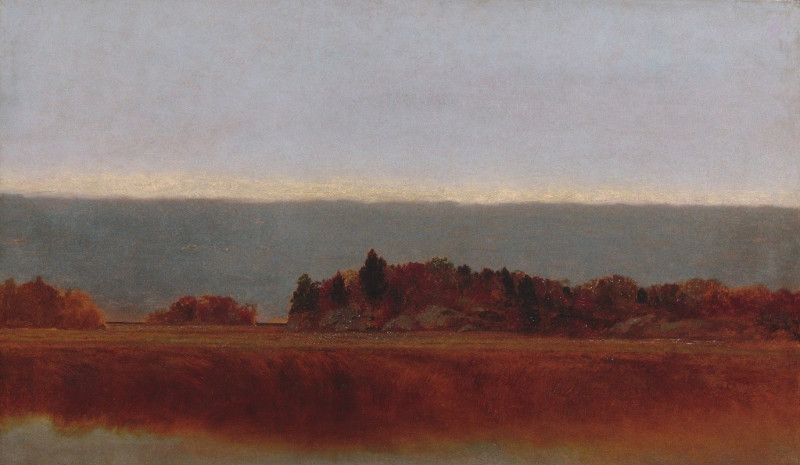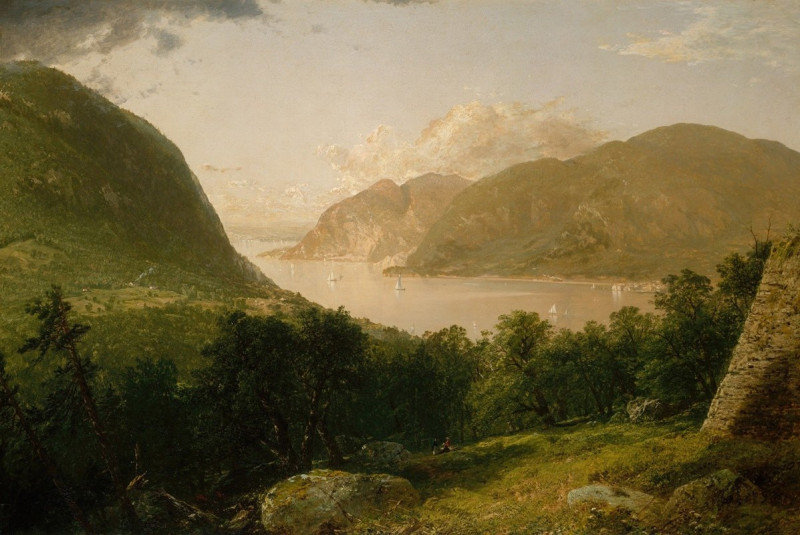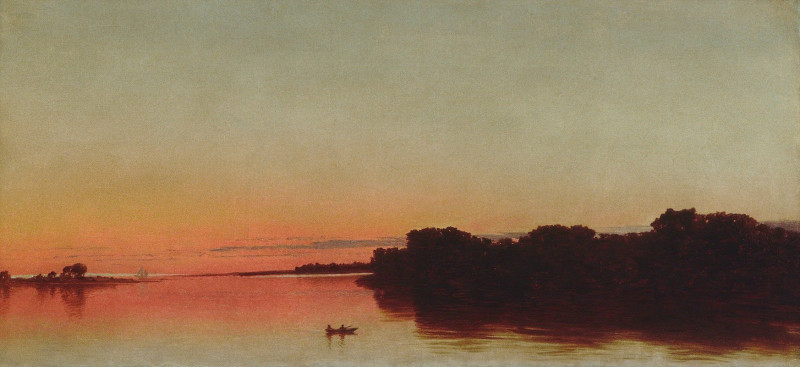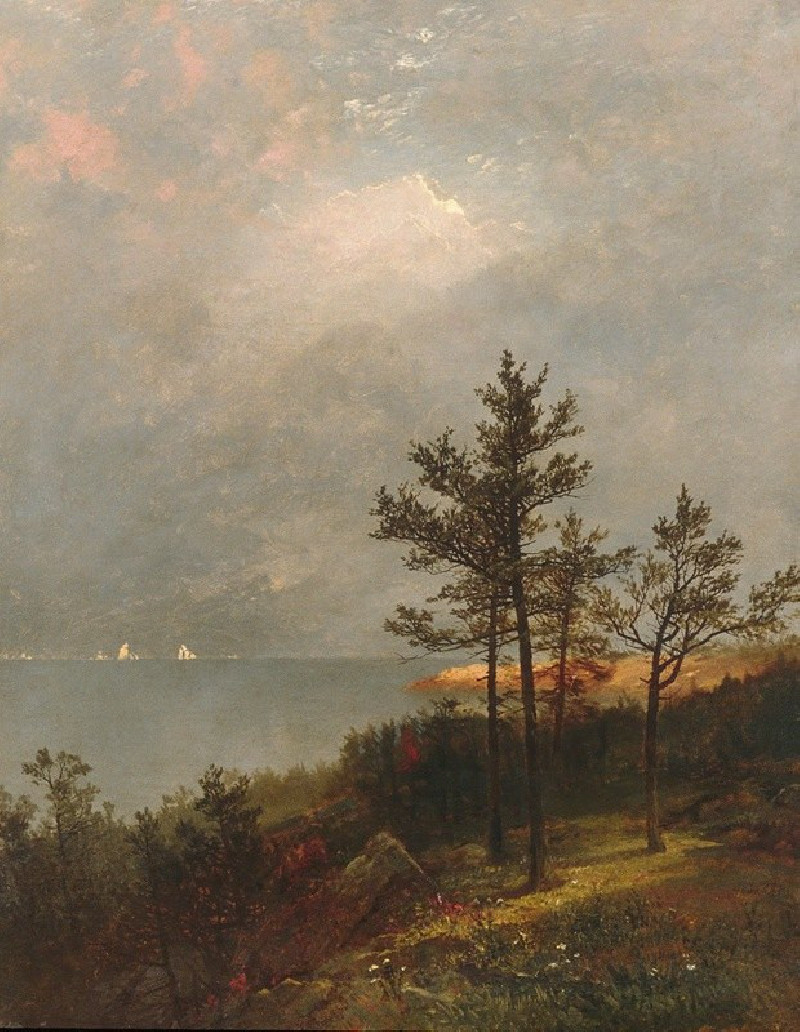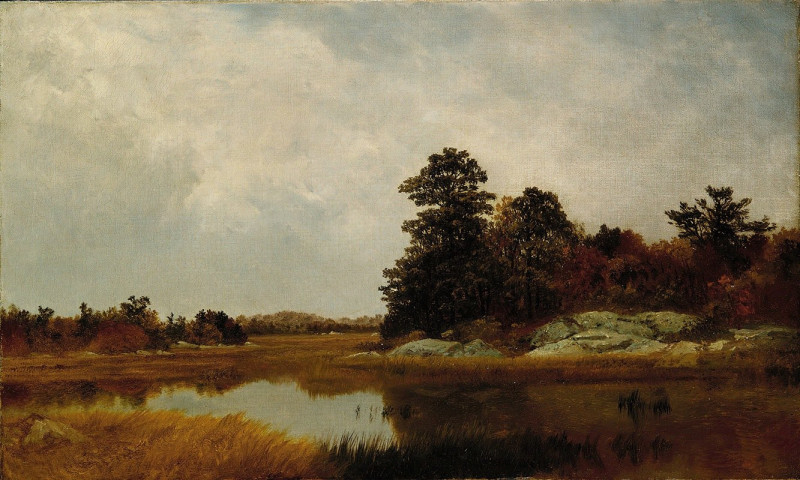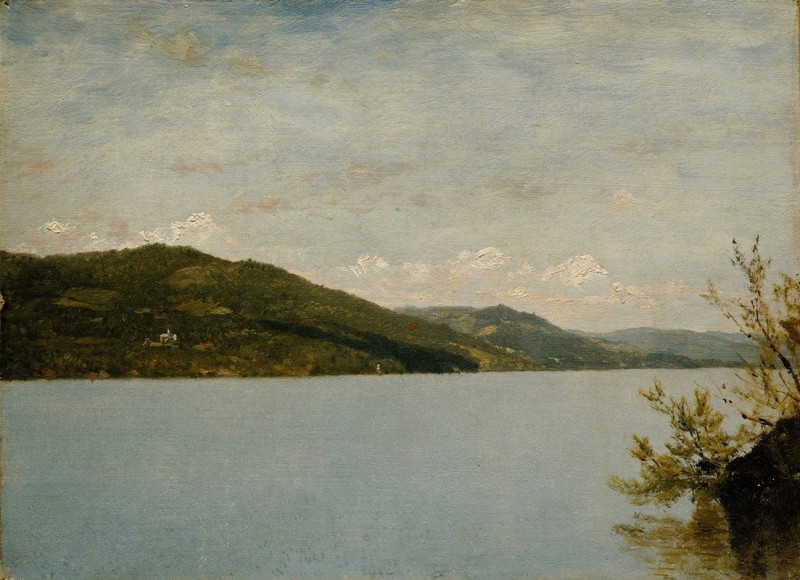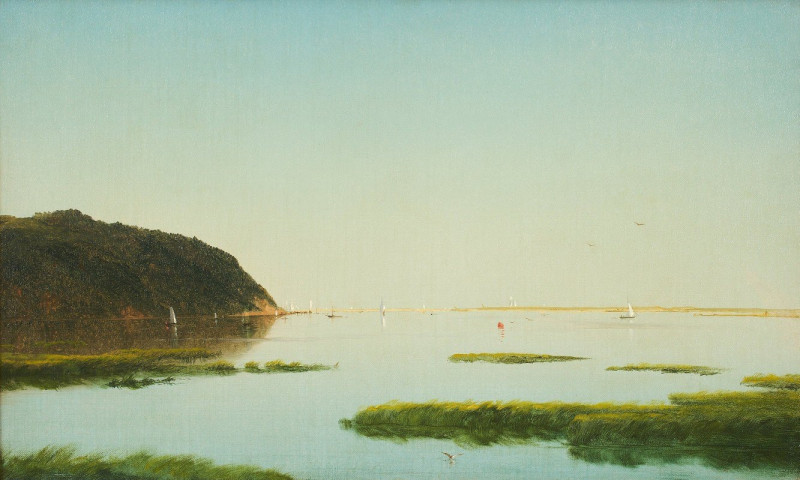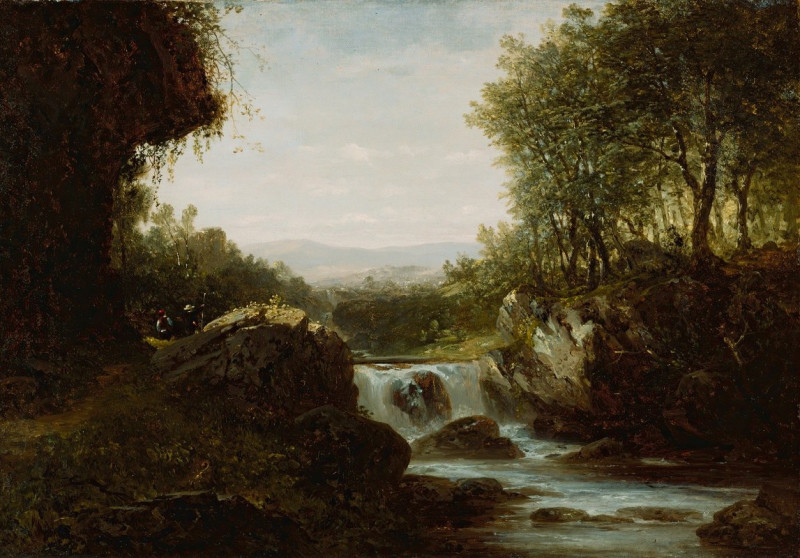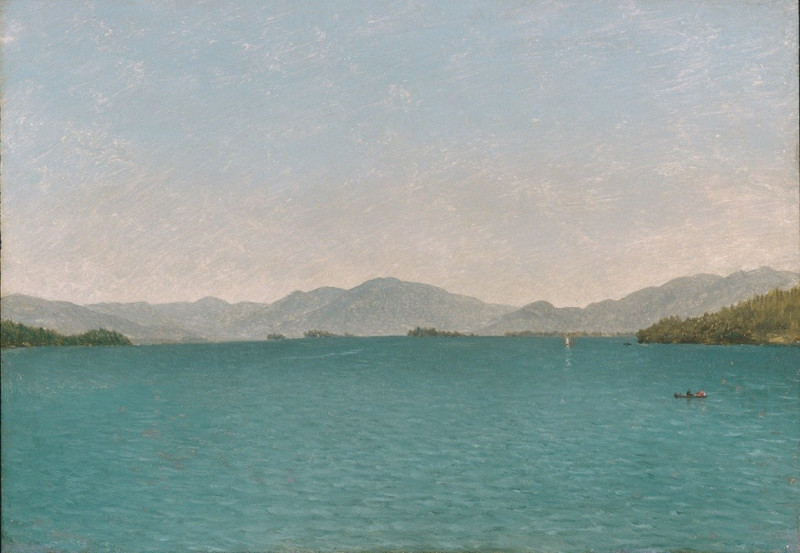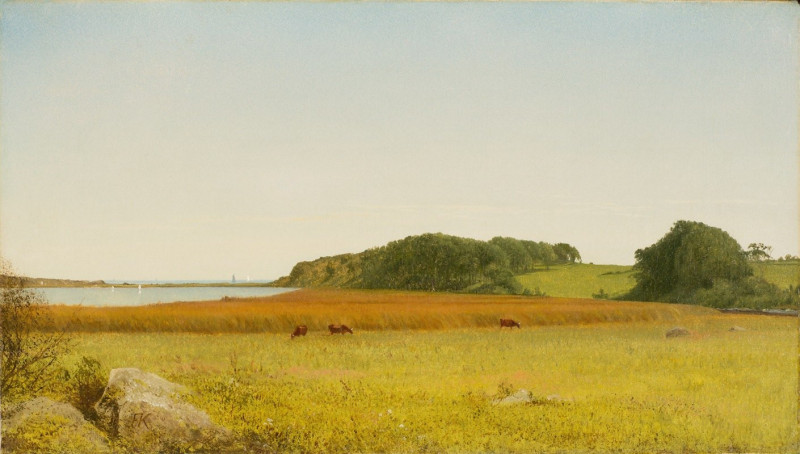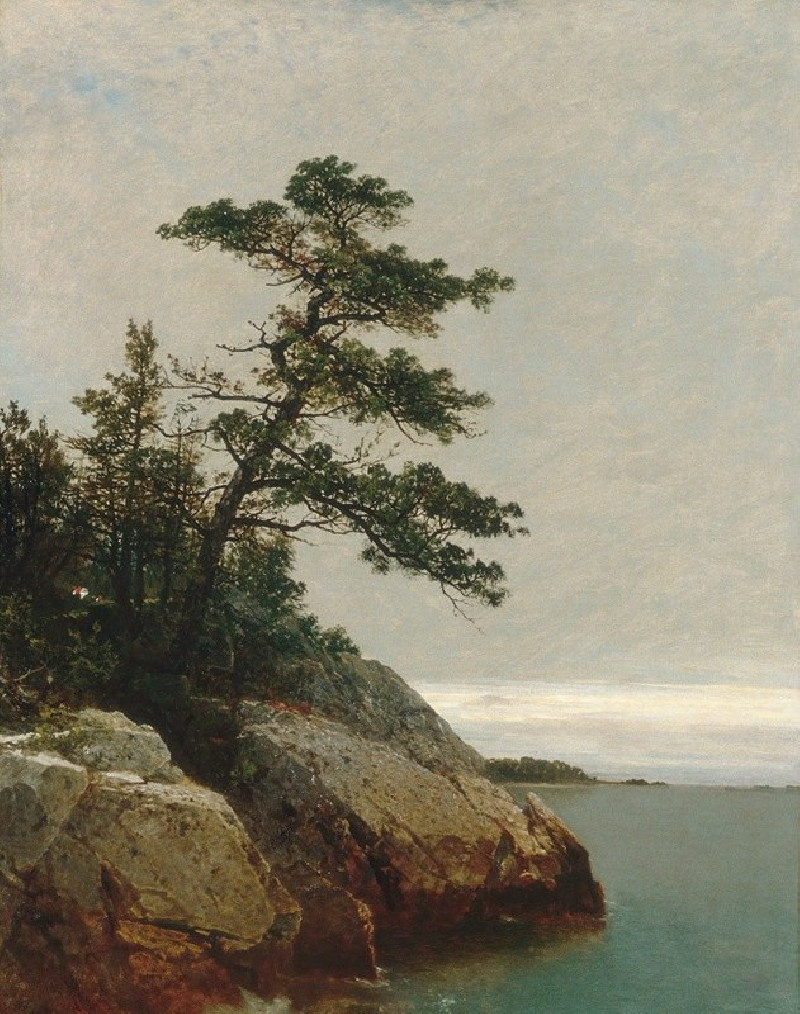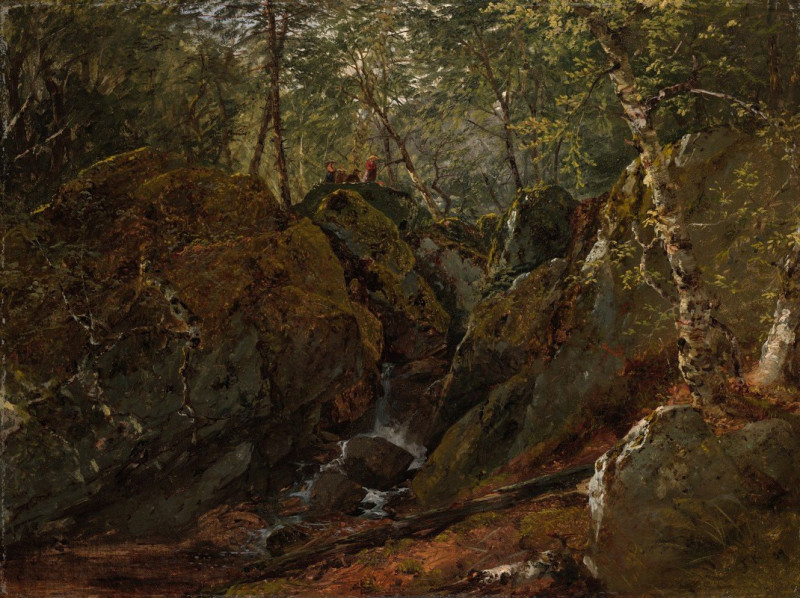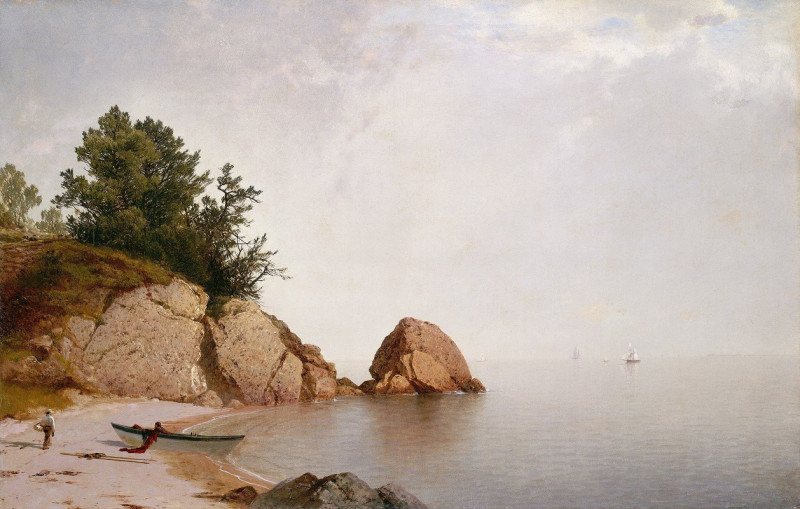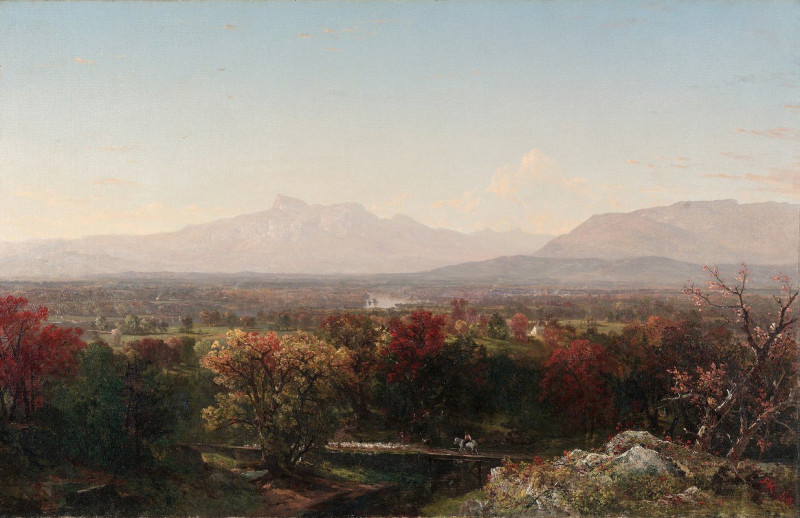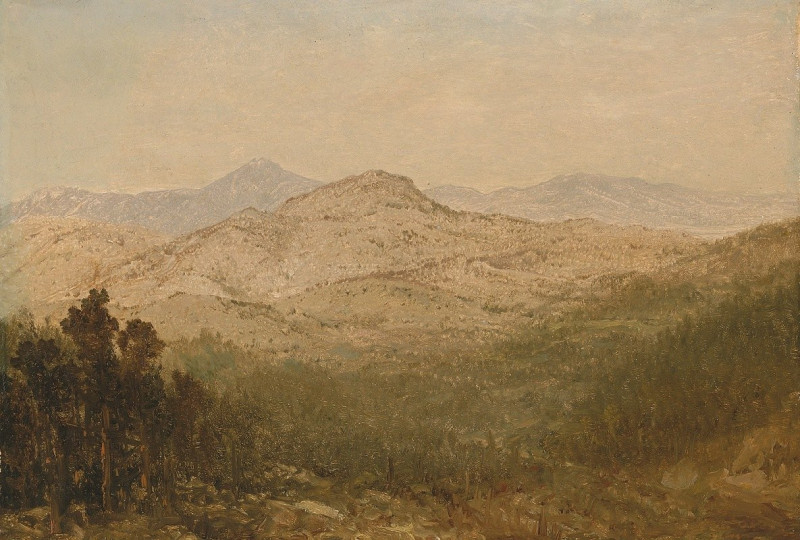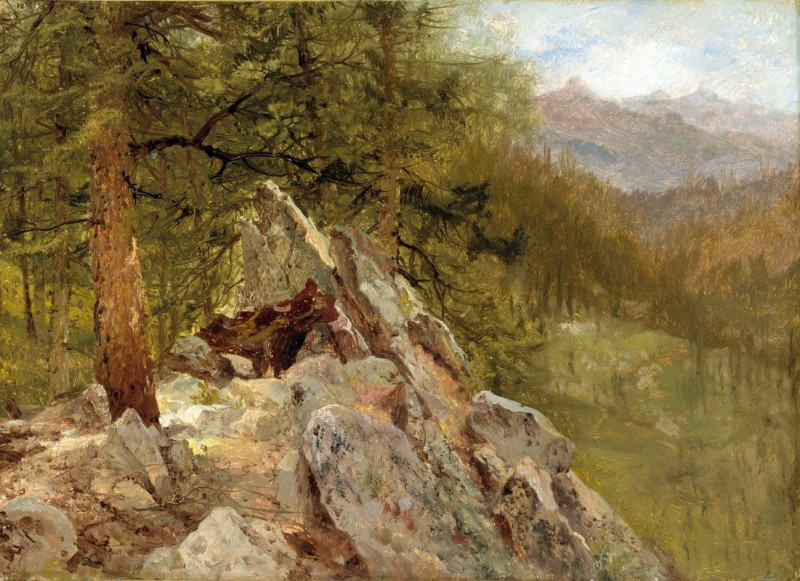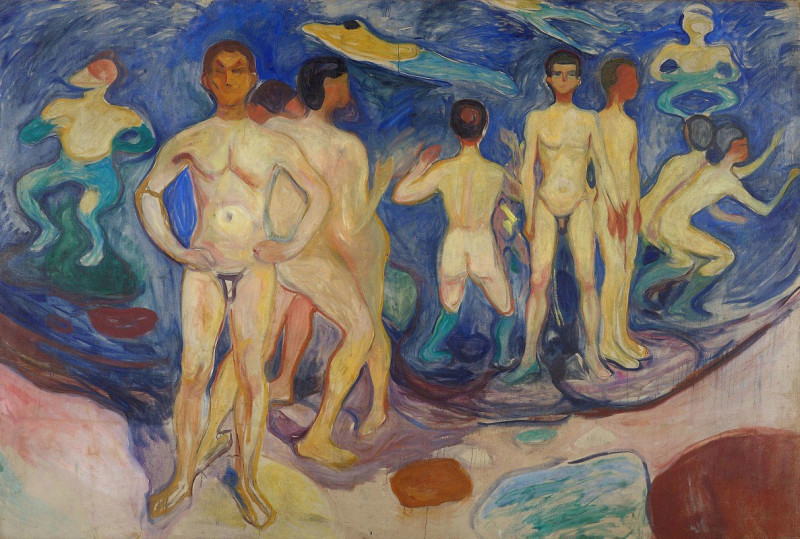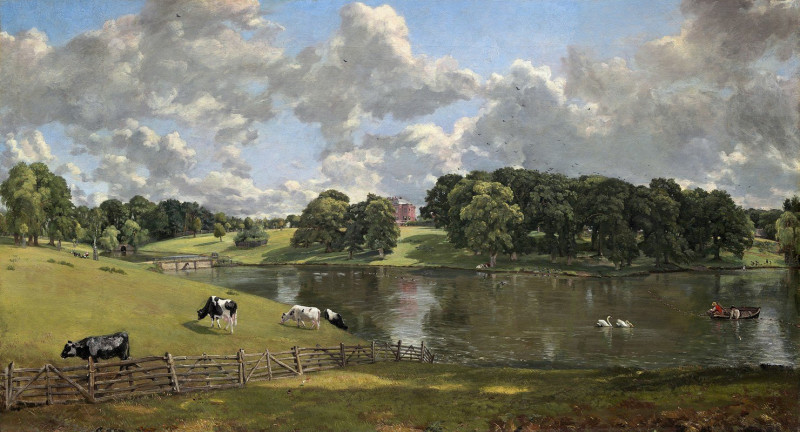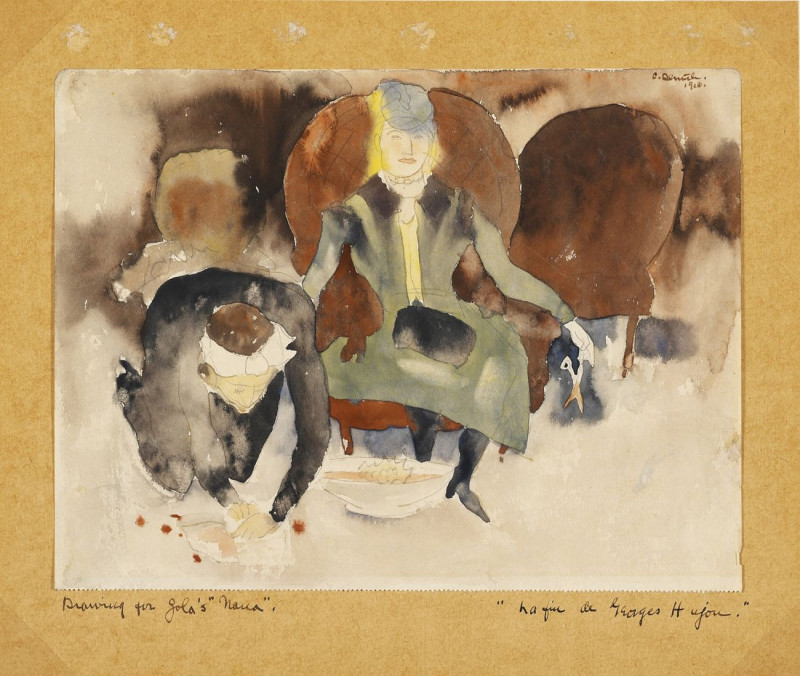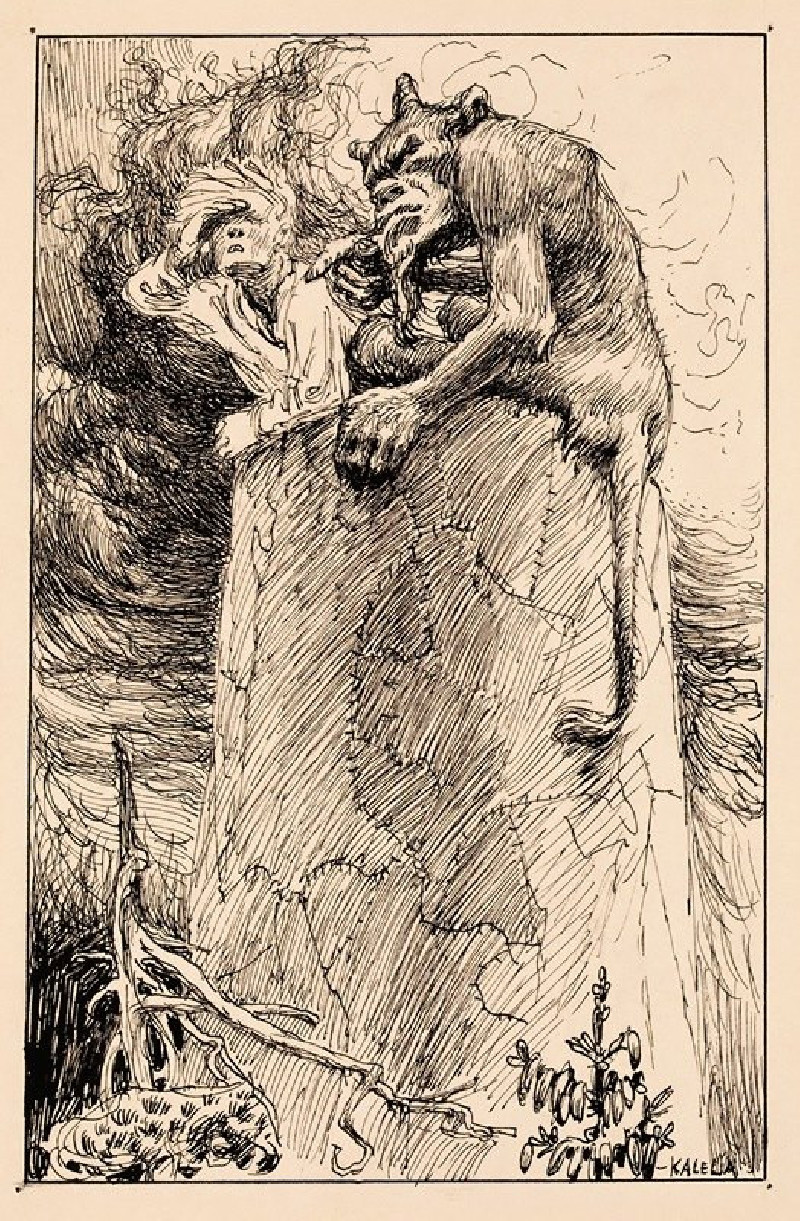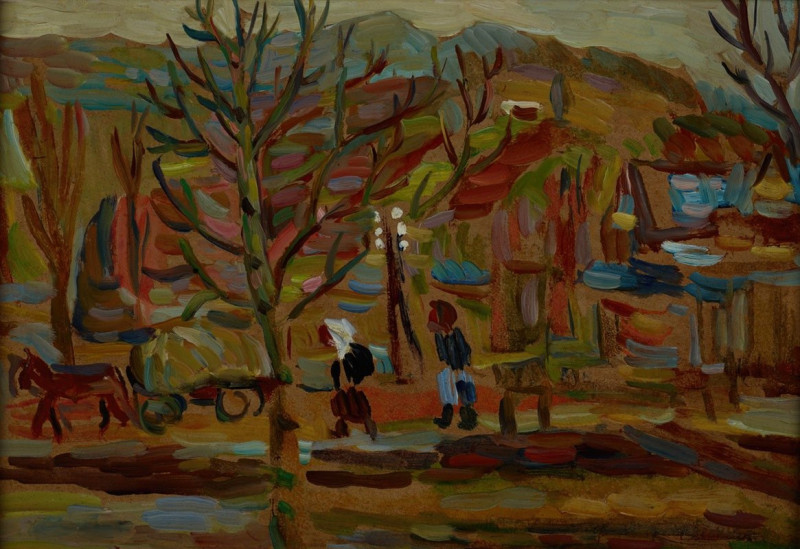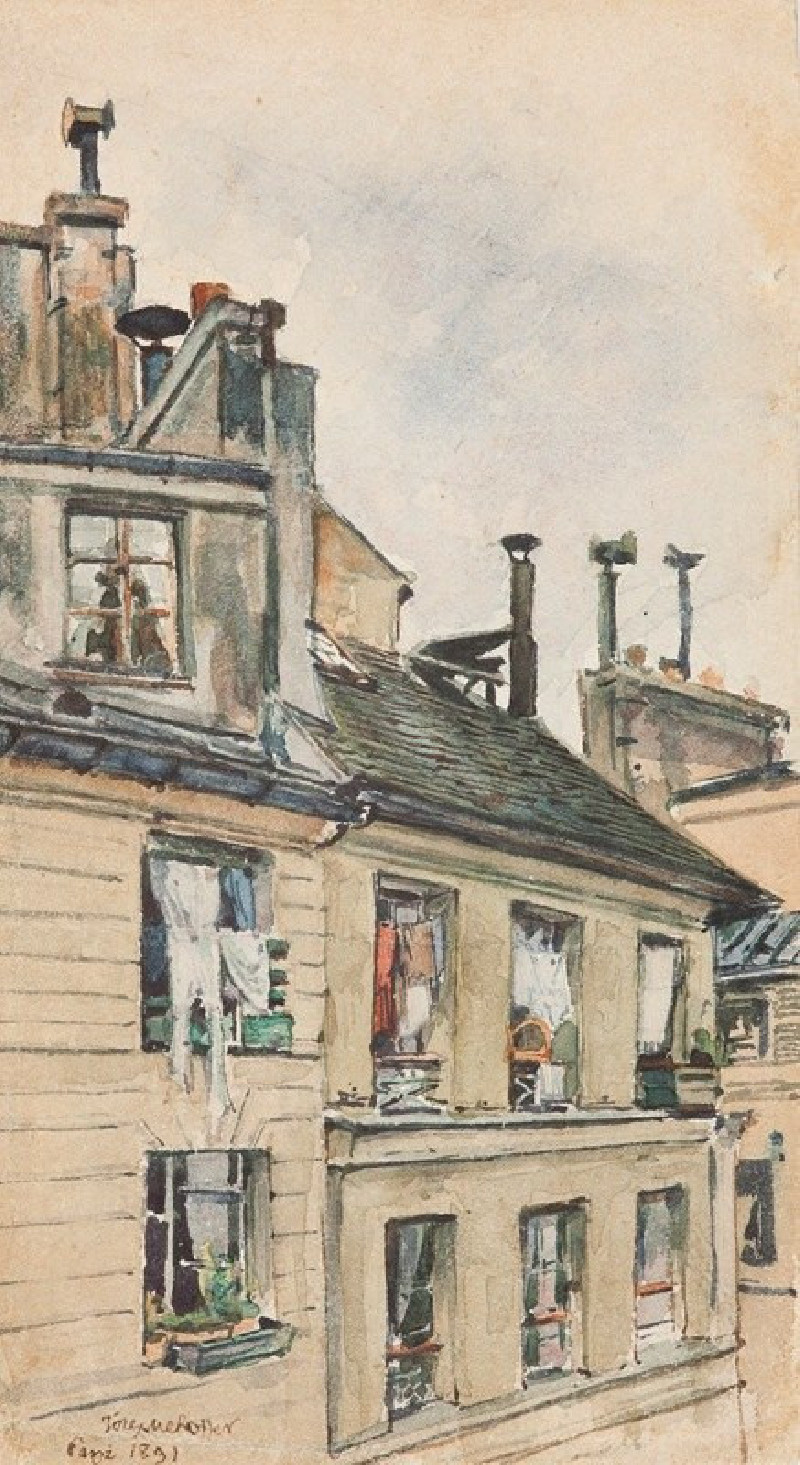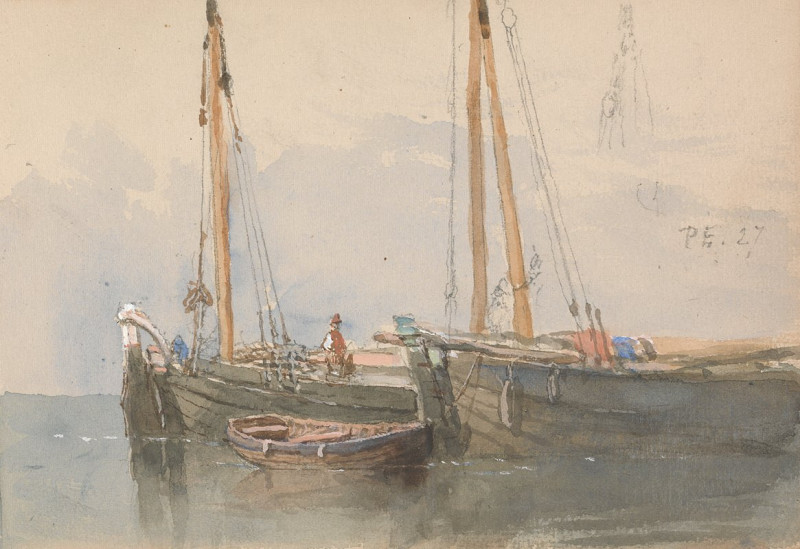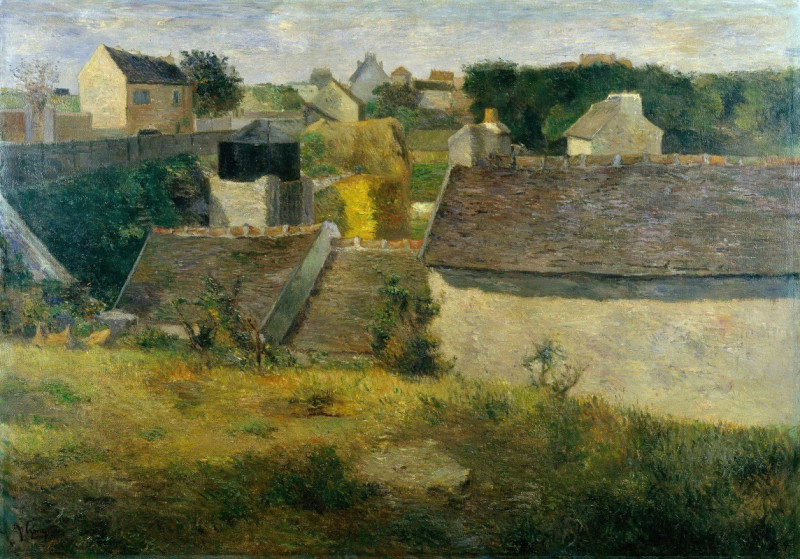Rocky Pool, Bash-Bish Falls (1865)
Technique: Giclée quality print
Recommended by our customers
More about this artwork
"Rocky Pool, Bash-Bish Falls" by John Frederick Kensett captures the serene beauty and rugged wilderness of nature in a stunningly composed landscape painting from 1865. At the center of the composition, a waterfall cascades gracefully between towering rock formations, creating a tranquil pool below. The detailed texture of the rocks adds a robust and raw element to the scene, contrasting with the soft, flowing water.The dense foliage framing the waterfall is rendered with careful attention to the interplay of light and shadow, immersing the viewer in a lush greenery that seems to whisper tales of the wild. Above this idyllic nook, the sky opens up to reveal a distant glimpse of a calm, ethereal horizon, bathed in the soft light of an overcast sky. Kensett masterfully uses this light to draw the viewer's eye through the rugged terrain to the tranquility of the sky beyond, creating a sense of depth and vastness.The presence of a lone figure dressed in red, sitting atop one of the rocks, invites viewers to reflect on the human connection to nature. This figure adds a scale to the grandeur of the landscape and provides a focal point that humanizes the sublime scene. The artist's integration of human elements within the natural landscape emphasizes the romantic ideal of living in harmony with nature.Overall, Kensett's "Rocky Pool, Bash-Bish Falls" is a poignant reminder of the enduring beauty of natural landscapes and the peaceful solitude they offer. This painting encourages a contemplation of nature's majesty, combined with a deep appreciation for the artistic skill required to capture such a scene.
Delivery
Returns
John Frederick Kensett was an American landscape painter and engraver born in Cheshire, Connecticut. A member of the second generation of the Hudson River School of artists, Kensett's signature works are landscape paintings of New England and New York State, whose clear light and serene surfaces celebrate transcendental qualities of nature, and are associated with Luminism. Kensett's early work owed much to the influence of Thomas Cole, but was from the outset distinguished by a preference for cooler colors and an interest in less dramatic topography, favoring restraint in both palette and composition.

